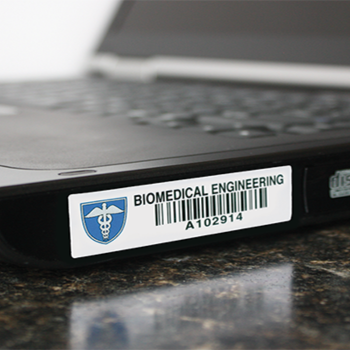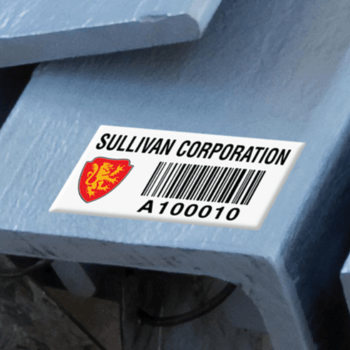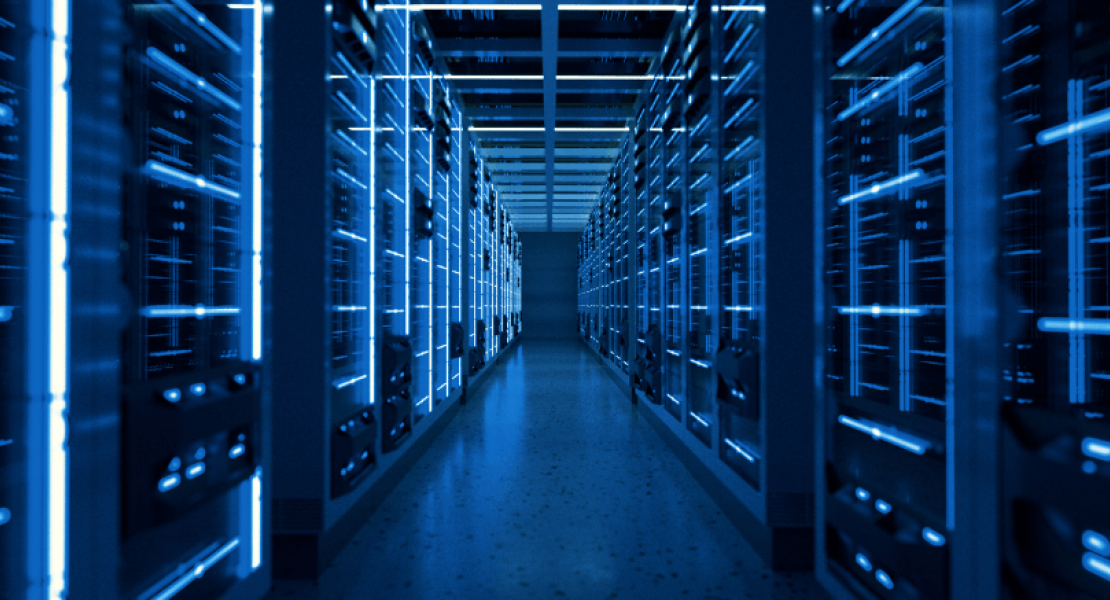ID plates are a fundamental component of effective data center management. They can take a number of different forms including barcode and/or radio frequency identification (RFID). Read further to learn more about the uses of ID tracking in data centers.
How Can RFID Tracking Help the Data Center Management Industry?
RFID (radio frequency identification) tracking can significantly enhance the data center management industry by providing efficient and accurate methods for monitoring, tracking and managing various assets and processes within a data center environment. Here's how RFID tracking can help this industry:
- Asset Tracking and Management - Data centers house a multitude of valuable assets such as servers, networking equipment, storage devices and more. RFID tags like Metalcraft's Universal Mini RFID Tag can be attached to these assets to monitor their location, status and movement within the facility. This helps in reducing manual errors and it saves time during audits and inventory checks.

- Inventory Management - With RFID tags attached to assets and inventory items, data center staff can conduct regular inventory checks and audits more quickly and accurately. This ensures that all equipment is accounted for and reduces the risk of lost or misplaced items.
- Efficient Deployment and Maintenance - During server deployment and maintenance, RFID tags like Metalcraft's RFID Server Tag can help identify specific servers or equipment needing attention. This reduces the time spent on locating the right equipment and streamlines the maintenance process.
- Security and Access Control - RFID technology can enhance security by controlling access to sensitive areas in the data center. Authorized personnel can be issued RFID badges that allow them access to specific zones.
- Lifecycle Management - RFID tags like Metalcraft's Universal RFID Micro Tag can store important information about the equipment's lifecycle, including purchase dates. This information aids in planning for upgrades and replacements.
- Reduced Management - Faster asset and equipment tracking through RFID technology helps in reducing downtime during maintenance or troubleshooting activities. Identifying faulty equipment quickly leads to faster resolution of issues.
- Data Analytics - RFID-generated data can be analyzed to identify patterns and trends related to asset utilization, maintenance cycles and overall data center operations. This information can guide data center managers in making informed decisions for resource allocation and process improvements.
- Compliance and Auditing - RFID tracking can assist data centers in complying with regulatory requirements and industry standards. Accurate and detailed tracking records are readily available for audits and compliance checks.
Incorporating RFID tracking into data center management practices enhances operational efficiency, reduces errors, improves security and contributes to cost-savings over the long-term.
What are Data Center RFID Tags?
Data center RFID tags are specialized RFID tags that are designed and optimized for use within data center environments. These RFID tags are equipped with unique identifiers and embedded technology that allows them to communicate wirelessly with RFID readers. Data center RFID tags serve various purposes, such as asset tracking, inventory management, security enhancement and overall data center optimization. Here are some key characteristics and features of data center RFID tags.
- Unique Identifiers - Each RFID tag has a unique identifier, often encoded in the EPC (electronic product code) memory bank of the RFID tag. This identifier distinguishes one tag from another, enabling accurate tracking and identification of individual assets.
- Frequency Range - Data center RFID tags typically operate within the ultra-high frequency (UHF) range (860-960 MHz) and provide a good balance between read range, data transfer speed and interference resistance.
- Read Range - Data center RFID tags can have varying read ranges, from a few inches to several feet. The choice of read range depends on the specific use case within the data center environment.
- Durability - Since data center environments can be challenging, RFID tags are often designed to be durable and able to withstand factors like temperature fluctuations, humidity, vibrations and physical impact.
- Form Factors - Data center RFID tags come in various form factors, including adhesive labels and metal-mount tags like Metalcraft's Universal RFID tags that are suitable for attaching to metal surfaces.
- Data Storage - Data center RFID tags can store a limited amount of data, typically in the form of a unique identifier or a small amount of additional information.

- Read/Write Capabilities - Depending on the specific tag, some data center RFID tags are read-only, while others have read/write capabilities. This allows data to be written to the tag, enabling updates to asset information or recording maintenance history.
- Integration - Data center RFID tags need to be compatible with existing RFID infrastructure, including RFID readers and software systems used for data center management, like Grey Trunk RFID Asset Tracking Software.
Data center RFID tags are a fundamental component of the broader RFID-based solutions that enhance data center management operations. By using these tags, data center managers can improve asset tracking, reduce errors, enhance security and optimize resource utilization within their facilities.
What is the Role of ID Plates in Data Center Management?
ID plates, also known as identification plates or asset tags, play a significant role in data center management by providing a reliable and efficient method of tracking and managing equipment and assets within the facility. These plates are typically small, durable labels that are affixed to a piece of equipment such as servers, switches, routers, storage units and more. Here's a breakdown of their role in data center management.
- Asset Tracking and Inventory Management - ID plates contain essential information about the equipment, including serial numbers, model numbers, purchase dates, warranties and other relevant details. By scanning and manually reading these plates, data center staff can quickly access accurate information about each asset. This simplifies inventory management and helps prevent issues like lost or misplaced equipment.
- Maintenance and Repair - Data centers house complex equipment that requires regular maintenance and occasional repairs. ID plates aid technicians in identifying the specific equipment and its configurations. This helps streamline maintenance processes, ensuring that the right maintenance procedures and spare parts are used for each asset.
- Resource Optimization - Data centers often host a large number of servers and other equipment. Properly labeled assets enable administrators to track resource utilization accurately. This information is crucial for optimizing resource allocation, balancing workloads and identifying underutilized or overutilized assets.
- Troubleshooting and Issue Resolution - In the event of equipment failure or operational issues, ID plates provide crucial information that can expedite troubleshooting. Technicians can quickly identify the equipment in question, assess its specifications and address the problem more efficiently.
- Compliance and Auditing - Many industries have regulatory compliance requirements that mandate accurate record keeping and accountability for data center equipment. ID plates aid in maintaining accurate records, making audits smoother and reducing compliance-related risks.
- Security and Access Control - In data centers, security is paramount. ID plates help verify the presence of authorized equipment and detect any unauthorized additions or removals. This aids in preventing security breaches or tampering with critical systems.
- Lifecycle Management - ID plates play a role in managing the entire lifecycle or data center equipment. From procurement to retirement, tracking equipment through its lifecycle allows for better financial planning, replacement scheduling and ensuring equipment stays up to date.
Overall, ID plates are a fundamental component of effective data center management. They contribute to streamlined operations, improved resource allocation, better security and enhanced overall efficiency within the data center environment.
For more information on the role of ID plates in data center management, please contact Metalcraft at 800-427-5283 or [email protected].
 | About the Author: Marianne AlvaradoMarianne Alvarado is our Vice President of Sales. Alvarado joined Metalcraft in March of 2000 as a Territory Specialist, became Sales Manager in January 2022 and was named Vice President of Sales during August of 2023. She leads both the Outside and Inside Sales teams. Marianne lives in Davenport with her husband, Dave Beeman. Mobile Phone: 641-529-9492 Email: [email protected] Office: 3360 9th St. SW, Mason City, IA 50401 Office Phone: 641-423-9460 |




